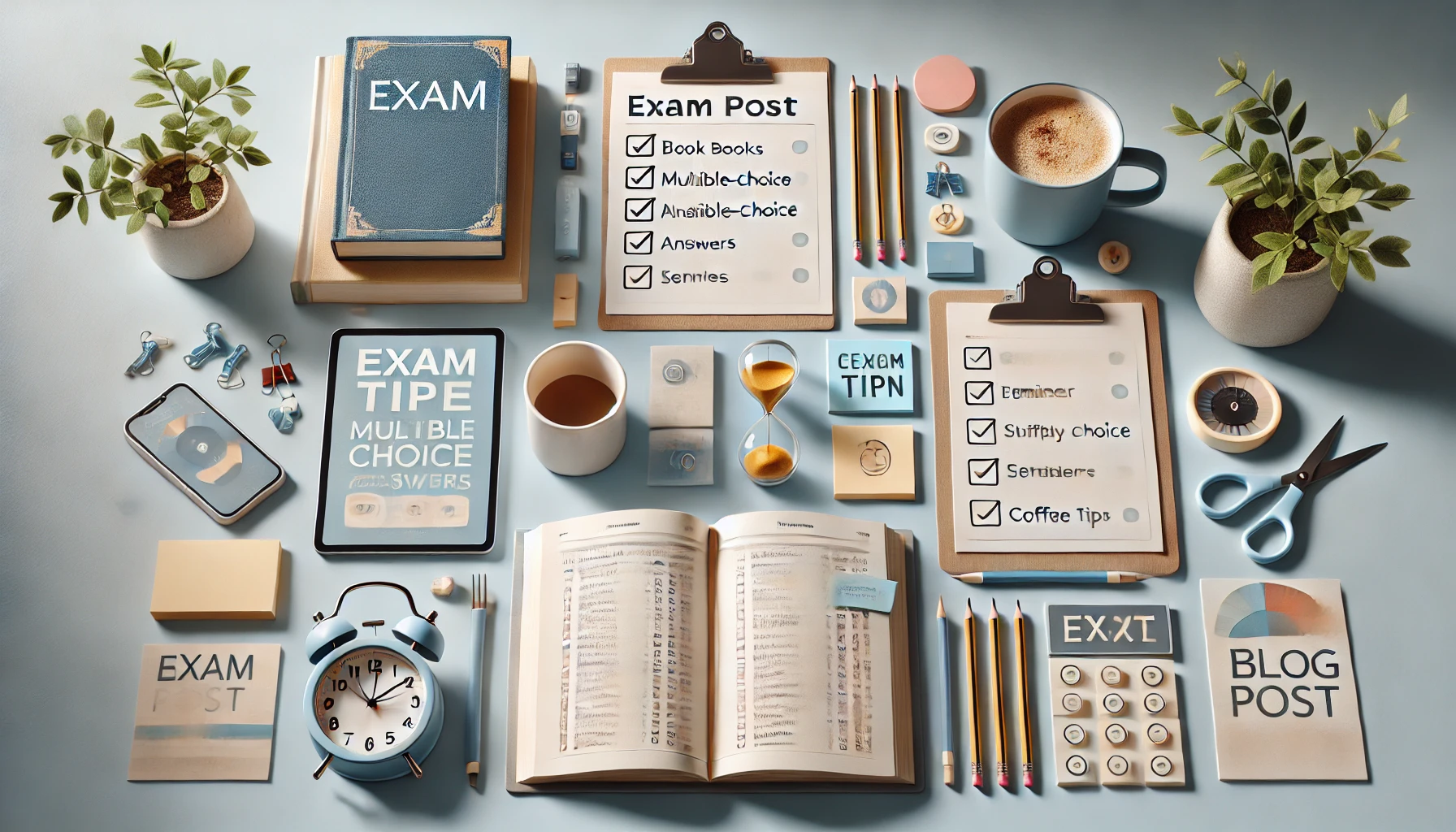
Welcome to our guide on "Everything you need to know for your HSC English Module C - The Craft of Writing exam". Today, we will discuss all the key elements and skills of this section that are essential to know in preparation for your exams.
The Key Mod C exam information you need to know
Module C - The Craft of Writing is the final section of English Standard/Advanced paper 2.
This section is worth 20 marks.
The question booklet will include the Module C questions/stimulus. Write your response in the writing booklet.
Within Module C, marks vary between Part A (imaginative/discursive/persuasive) and Part B (reflection).
However, Part A is usually worth no less than 10 marks.
Here are some common mark distributions between Part A and Part B.
- 10 mark Part A and 10 mark Part B
- 12 mark Part A and 8 mark Part B
- 15 mark Part A and 5 mark Part B
- 20 mark Part A and NO part B
Let’s break down what is involved in Part A and Part B within Module C
Part A
This section involves writing our own text.
The question will give you a stimulus.
This can include a quote…
“The best arguments in the world won’t change a person’s mind. The only thing that can do that is a good story.”
Richard Powers, The Overstory
Use this quote as inspiration to write a discursive or persuasive.
…a
visual…

Write an imaginative composition, using this photo as inspiration for the setting.
…or a statement…
Craft an imaginative/discursive composition that gives voice to an idea you are passionate about or which intrigues you.
Using the stimulus is key to achieving high marks in Mod C. Many students will use a memorised response, and forget to link it to the stimulus. Make sure that you have a solid, personal understanding of what the provided stimulus is communicating, and use it to build your response.
The provided question will tell you which text type to write.
A very important note is that some exam papers will limit text types, whilst other papers will give us a choice. This happened in the 2024 HSC, where students could not write an imaginative in Advanced, and could not write a discursive in Standard.
Here are some quick tips for writing each text text type:
Imaginative
- Have a clear and simple storyline → don’t overcomplicate!
- Make sure your purpose/message is clear → don’t force the marker to find it!
Discursive
- Show different perspectives/viewpoints to your chosen topic, without being a persuasive
- Use engaging language and tone, as if you were presenting your writing as a speech
Persuasive
- Have an engaging perspective and keep expanding and reinforcing your point/s
- ‘Hook’ the reader by using strong language to convey your point/s
Part B
This section is the reflection. It is a common occurrence in most exam papers, but can also be completely omitted in some. Regardless, we should ensure we practice our reflection skills in case it is in our exam paper.
We need to appropriately adapt our reflection to the amount of marks allocated.
Let’s break down what we suggest to include for each mark allocation:
10 marker
This is usually the maximum marks allocated for Part B.
You should include (but not limited to) these topics in your reflection:
- Title/form
- Purpose/overall message of your response
- Target audience
- How you have been inspired by your prescribed text (compare)
- How you have been inspired by the prescribed stimulus
- Techniques + analysis + reasoning of your creative choices
Remember that these are just our recommended topics you should cover. Feel free to discuss more topics if it will enhance your response.
E.g. Discuss what writing this response means to you (goals/motivations)
It is up to you how much time you write on each topic, but remember that the reflection is about YOUR work - not your prescribed/inspiration text. This is a common mistake for students.
E.g. Writing about your creative technique choices is more important than analysing your prescribed/inspiration text.
8 marker
We recommend the same topics as the 10 marker, but ensure you spend appropriate time on each topic, since it is worth slightly less. Don’t spend all your time on one topic!
5 marker
Most 5 marker reflections aren’t just the basic question that tells you to ‘write a reflection’. They usually are more specific.
Here are two examples:
“Explain how your response uses a literary device from Module C”
Here, we are told just to use ONE literary device, however, we should still include these topics in our reflection:
- Title/form
- Purpose/overall message of your response
- Technique + analysis + reasoning of your creative choices
Remember, you are not limited to these topics. Feel free to add more if you feel it will enhance your reflection, while still answering the question.
E.g. Compare with your prescribed text
“Reflect on how your Part A has been inspired from ONE text you have studied in class”
This is essentially the standard reflection question, but worded differently. The major thing to put more focus and time on is your comparison with the prescribed/inspiration text.
0 marker
Congratulations! No reflection needed. Just make sure your 20 mark Part A response is really high quality.
It is possible that Part B is the response! 2022 HSC English Advanced Part A was instead an extract analysis. Be prepared for anything!
How to revise for Mod C
- Find past papers, and write timed responses to a range of question/stimulus types
- Read exemplar responses from other students and analyse what makes them successful
- Ask for feedback from your teacher/tutors/peers to gain multiple perspectives of your work
The trick to the Mod C exam is to be able to write to any prescribed stimulus, and not get surprised!
Want to improve your study efficiency while preparing for Mod C? Make sure you’re using techniques backed by science—check out our guide to Scientifically Proven Strategies to Improve How You Study!
Techniques for the exam
One of the hardest parts of Mod C is that it is very unpredictable.
The text type could be forced, Part A may be 20 marks, the stimulus could be a really long quote, etc.
During reading time…
- Make a mental plan of your storyline/progression
- What are important details of the stimulus that you need to consider?
- What is the overall purpose/message of your response?
- What perspectives/characters will you use?
Understanding what the exam question is asking is just as important as your writing itself. Take a look at our Complete Guide to Understanding HSC Command Terms for extra clarity and exam confidence.
During writing
- Follow your plan - if needed, take your time to see if you are actively engaging with the stimulus/question
- Manage your time for each section according to marks allocated
- Control the pace/direction of your response accordingly
What are common mistakes in Mod C?
Using a memorised response that has little/no relation to the prescribed stimulus
Actively connect your response to the stimulus throughout your work. You may need to modify/completely change your memorised response to do this successfully.
Confusing storyline/progression of the response
Plan out your response before starting.
Unbalanced characters (imaginative), unbalanced perspectives (discursive)
Give equal quality and time to each character/perspective in your response.
No discussion of YOUR creative choices and decisions in the reflection
Show the marker why you have chosen these techniques/ideas to achieve [this].
Students having a preference to writing one text type over another
Remember to practice writing creative, discursive and persuasive texts, in case the exam prescribes only one of them.
Many students also lose marks because they don’t adapt to unseen questions well. To avoid this, here’s a helpful breakdown on How to Answer Unseen Texts on Your HSC English to Get Full Marks.
Additional Resources:
Here are 3 additional Mod C stimulus you can use to practice:
“Life is always surprising us - not by its rich, seething layer of bestial refuse - but by the bright, healthy and creative human powers of goodness that are forever forcing their way up through it.”
Maxim Gorky, My Childhood
Continue the quote as part of your imaginative/discursive/persuasive.
.webp)
Use the provided stimulus as inspiration for you imaginative/discursive/persuasive.
Use the perspective of ONE of your characters from your prescribed texts to craft an imaginative/discursive/persuasive.
Feel free to change up the mark counts, or the forced text types (imaginative/discursive/persuasive) to challenge yourself.
If you’re looking for practical steps to get more organised before the big day, we’ve put together a straightforward guide on How to Create a Study Plan That Works for You.
Final words of advice
Mod C is known to be a challenging section in English, since it is a very different style of writing compared to the other modules. You need to use a different part of your brain - be creative!
Remember Mod C is all about showing YOUR Craft of Writing.
Showcase your own perspective on topics.
Engage and educate the marker throughout your response.
Remember, preparing for the HSC isn’t just about academics—it’s about mindset too. If you're finding the pressure hard to manage, here are some tips on How to Help Your Child Cope with Exam Stress and Achieve Academic Success
On the exam day, be confident that all your hard work and study will be reflected in your results.
All the best for your exams!







